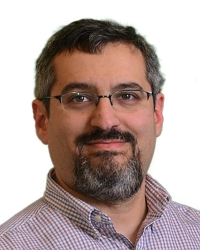TR2006-023
TOA Estimation for IR-UWB Systems with Different Transceiver Types
-
- , "TOA Estimation for IR-UWB Systems with Different Transceiver Types", IEEE Transactions on Microwave Theory and Techniques, DOI: 10.1109/TMTT.2006.872044, Vol. 54, No. 4, pp. 1876-1886, June 2006.BibTeX TR2006-023 PDF
- @article{Guvenc2006jun,
- author = {Guvenc, I. and Sahinoglu, Z. and Orlik, P.V.},
- title = {{TOA Estimation for IR-UWB Systems with Different Transceiver Types}},
- journal = {IEEE Transactions on Microwave Theory and Techniques},
- year = 2006,
- volume = 54,
- number = 4,
- pages = {1876--1886},
- month = jun,
- doi = {10.1109/TMTT.2006.872044},
- issn = {0018-9480},
- url = {https://www.merl.com/publications/TR2006-023}
- }
- , "TOA Estimation for IR-UWB Systems with Different Transceiver Types", IEEE Transactions on Microwave Theory and Techniques, DOI: 10.1109/TMTT.2006.872044, Vol. 54, No. 4, pp. 1876-1886, June 2006.
-
MERL Contact:
-
Research Areas:
Abstract:
In this paper, performances of stored-reference (SR), transmitted-reference (TR), and energy detection (ED) based time of arrival (TOA) estimation techniques are analyzed for impulse-radio ultra-wideband (IR-UWB) systems at subNyquist sampling rates. First, an additive white Gaussian noise (AWGN) channel is considered to emphasize certain fundamental issues related to these different transceivers. In particular, energy collection characteristics and decision statistics are presented. Probability of accurate peak detection is analyzed for each transceiver; and receiver operating characteristics for the leading edge are derived. Effects of number of pulses per symbol and number of averaging symbols are investigated in detail. Then, realistic multipath channels are addressed; and various maximum likelihood estimation approaches are investigated. A new estimator that jointly exploits the noise statistics and power delay profile of the channel is proposed, and a Bayesian estimator that (ideally) gives a lower bound is analyzed. Simulation results show that while ED and TR have better energy collection capabilities at low-rate sampling, they suffer from distributing the energy over time.
Related News & Events
-
NEWS IEEE Transactions on Microwave Theory and Techniques: publication by Zafer Sahinoglu, Philip Orlik and others Date: June 1, 2006
Where: IEEE Transactions on Microwave Theory and Techniques
MERL Contact: Philip V. Orlik
Research Areas: Communications, Signal ProcessingBrief- The article "TOA Estimation for IR-UWB Systems with Different Transceiver Types" by Guvenc, I., Sahinoglu, Z. and Orlik, P.V. was published in IEEE Transactions on Microwave Theory and Techniques.
